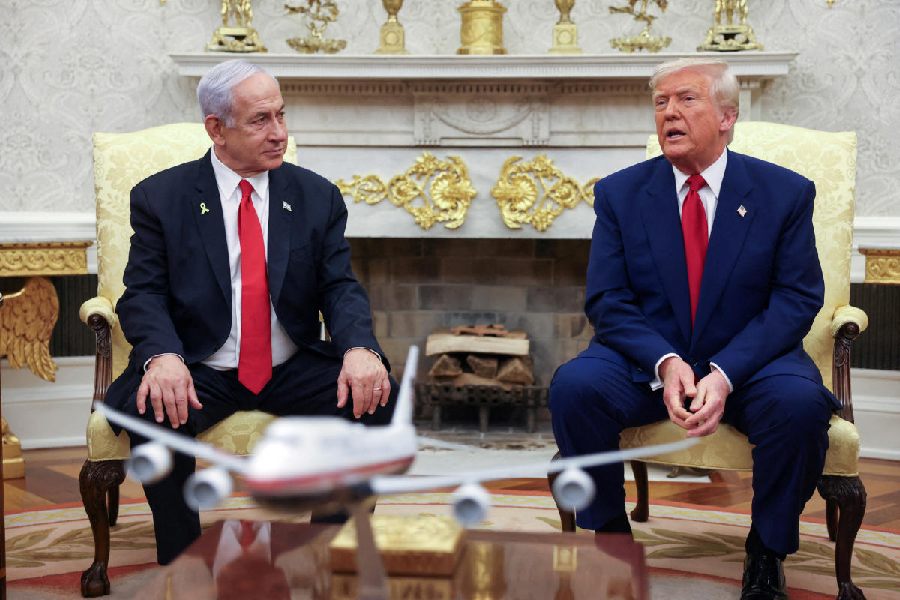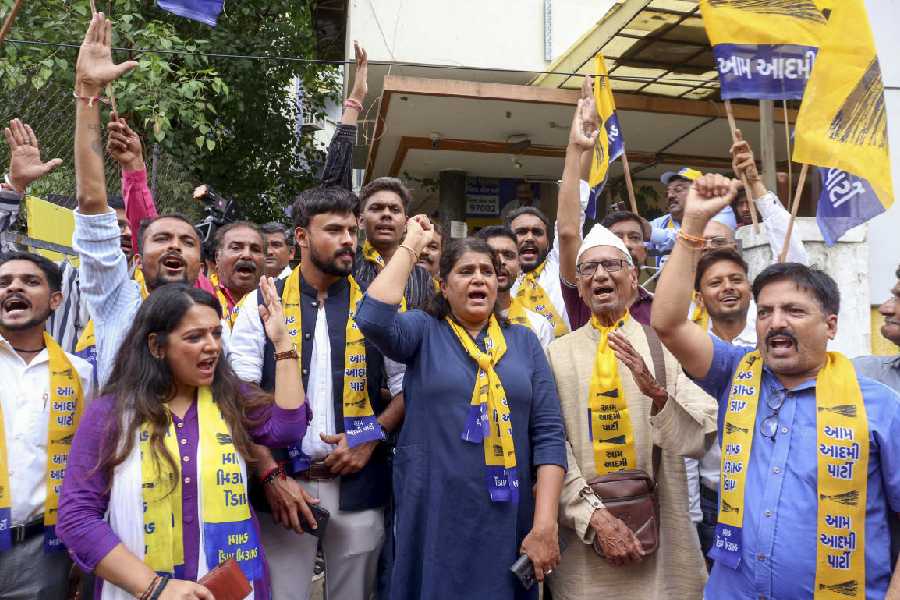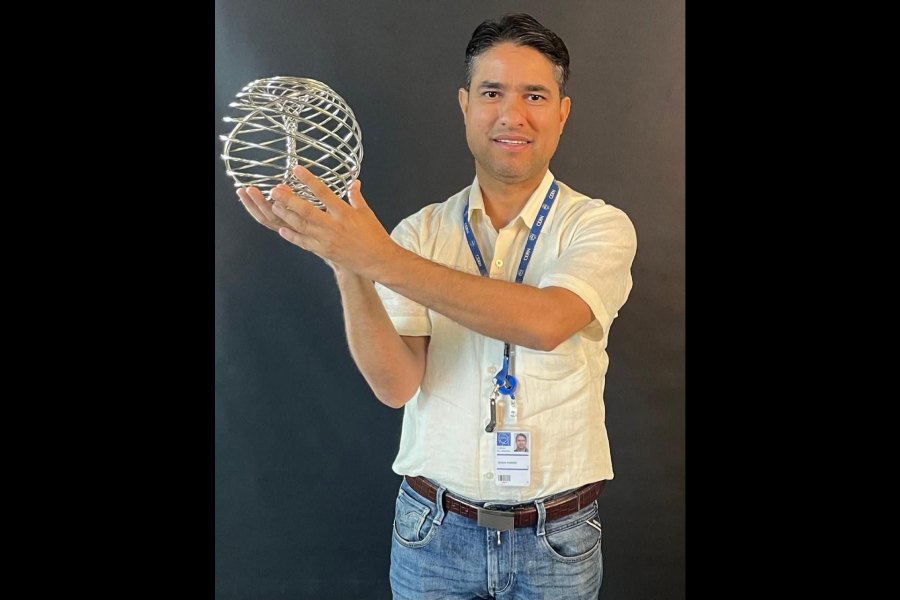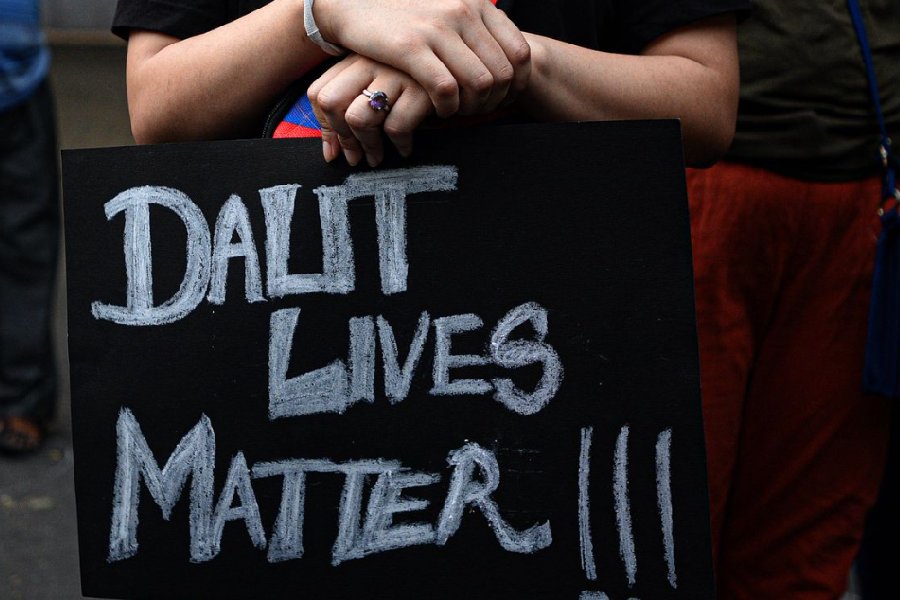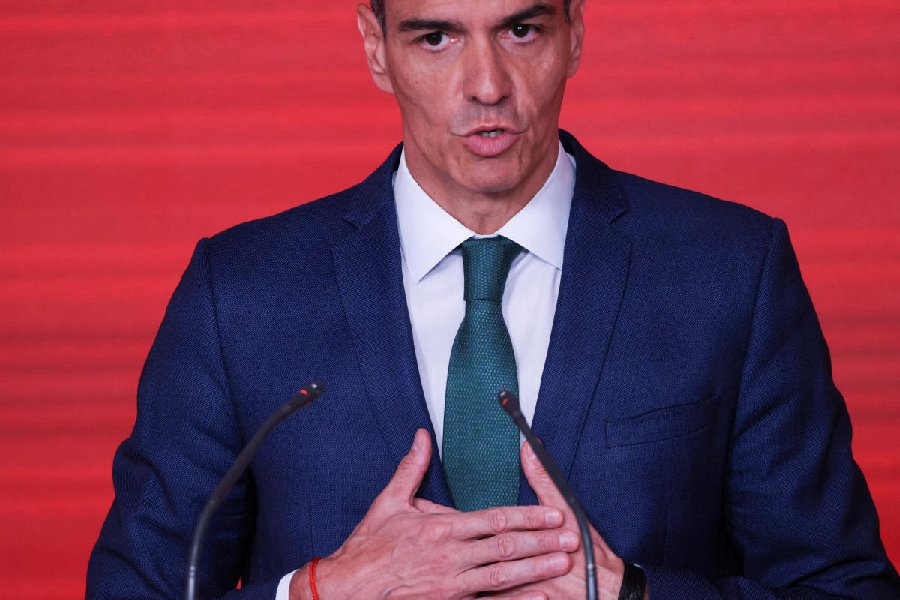 |
| Shilpa and Shaily. Picture credit: AIIMS |
New Delhi, July 9: Chhoti is no longer chhoti. Moti may not be moti any more. And surgeon Minu Bajpai who helped separate those Siamese twins 25 years ago is now preparing to cheerfully discharge another pair he’s sundered.
Bajpai, a senior paediatric surgeon at the All India Institute of Medical Sciences, New Delhi, and his colleagues have successfully separated Shaily and Shilpa, seven-month old Siamese twins who shared parts of their chest, upper abdomen and liver.
The twins, born last November in Aber village in Madhya Pradesh’s Satna district, were separated through an eight-hour surgical procedure that demanded the skills of a team of 30 surgeons, anaesthetists and nurses.
“The separation (of Shaily and Shilpa) was straightforward,” Bajpai told reporters today, six weeks after the procedure. “We’ve had far more complex cases of Siamese twins where fused organs made the surgery really challenging,” he said.
Separating Siamese twins is familiar territory for paediatric surgeons at AIIMS. In his three decades at the hospital, Bajpai himself has participated in operations on four of the eight pairs of Siamese twins separated at AIIMS since the 1960s.
Doctors say most such surgeries help conjoined twins pursue separate lives, but occasionally there is heartbreak. In one operation at AIIMS a decade ago, surgeons had to sacrifice one twin to save the life of the other.
“She started sinking on the table,” Bajpai said. “They shared a heart and there was nothing we could do — we had to take a quick decision and we saved the one we thought would have the best chance of surviving.” She has since grown well, he said.
Even a shared liver can cause problems. Bajpai recalled a pair of twins, Chhoti and Moti, born in a village now in Uttarakhand and brought to AIIMS in early 1988. “The planes along which their liver had been fused made it a really difficult surgery,” said Bajpai.
But the surgery went well and Chhoti and Moti returned to AIIMS for routine check-ups, initially every few months, then every year until they were in their teens. “At some point, we told them they have no business coming here any more,” said Bajpai, who says more than 90 per cent of his surgical time goes into repairing congenital defects in livers, kidneys, skulls and reproductive organs of children, even newborn.
The birth of Shaily and Shilpa on November 19, 2012, had shocked their parents Lal Bhai and Shashikala. “I had had two ultrasound scans, one at four months and another at eight months — no one told us we’re having twins,” Shashikala said today.
Their local MP, Ganesh Singh, brought the parents and the conjoined twins to AIIMS on December 12, where a team of surgeons decided for a few months to allow the babies to gain weight.
The surgeons operated on May 23, first dividing their skin bridge, then separating fused sections of their ribcage and soft tissues, and using a laser to dissect the liver. Both girls received adequate sections of the liver.
“Young children, even newborn, can tolerate surgery very well — I would say in some ways even better than adults,” said Bajpai, who says he was hooked to surgery during his third year of medicine. “It’s fascinating to watch them recover so fast.”
Bajpai is unclear what made him pick surgery. “It’s like asking what colour you like best.”





